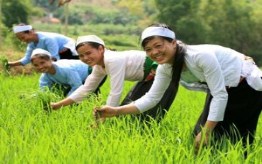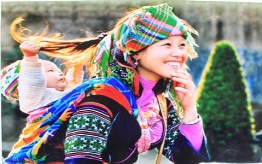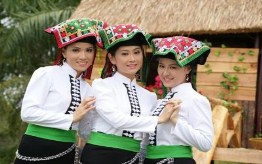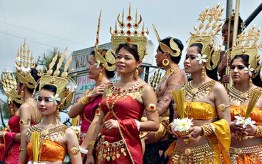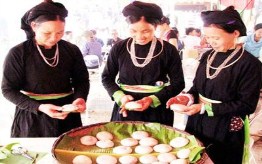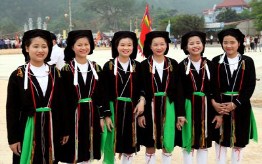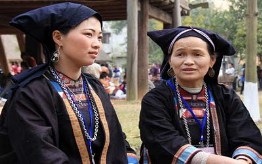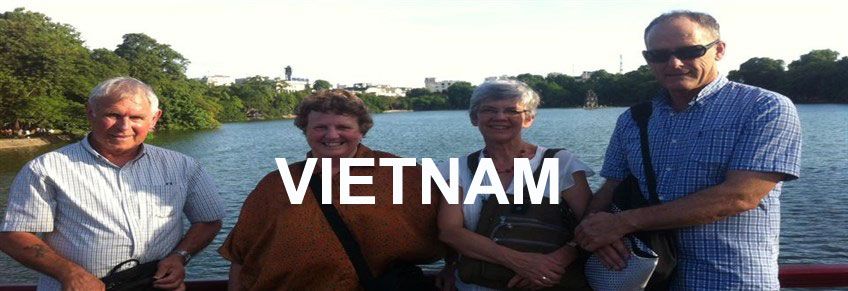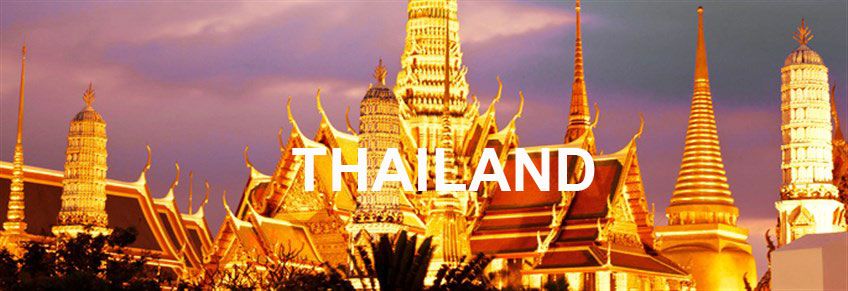If you travel to Vietnam, it is very easy to see many Vietnam's ethnic groups including Thai people. With nearly 900,000 inhabitants (1.45% of the Vietnamese population), Thai ethnic group is divided into "Thai Trang" (White Thai) and "Thai Den" (Black Thai) on the basis of the clothing colour. The residential sphere spreads from Red River right bank to Thanh Hoa, NgheAn Highlands. It is easy for them to mix with native ethnic groups. They settle in valleys surrounding immense fields (Muong Thanh, Quang Huy, Than Uyen, Nghia Lo), and live on farming, breeding, weaving. The Thai people has its own writing and a very developed popular culture.
In the western part of Nghe An Province, there reside about 13,000 ethnic Thais belonging to the sub-groups of Tay Thanh, Tay Muoi, and others. Like their counterparts in the North-West of the country, the Thai community here possesses a rich culture that has been built up over the centuries. In their everyday working life, the Thai minority has developed a rich and abundant culture. Many traditional rites and festivals exist along with other Thai cultural activities. In this article, we introduce one particular cultural event - the Thai's Cave-Picnicking Festival.
According to the elders in the community, the Cave-Visiting Festival of the Thai people living in the mountain villages surrounding Qui Hop dates back to time immemorial, and was in existence up to the middle of the twentieth century. Every year during the period from the 3rd through the 10th day of Thang Gieng ( the Lunar Year's first month following Nguyen Dan - the Lunar New Year's Day), the Thai folk in and around the locality flock to the Cave - Picnicking Festival. The event takes place in Tham Mon (Mon Cave) located in the Chau Quy commune, Qui Hop district. The Cave visitors are of all ages, but mainly single young people. They are natives from the villages of Qui Hop and other neighbouring districts in West Nghe An. Visitors are allowed to enter the cave only once a day until they find themselves a boy or girl friend, and return home when the festival ends. It is an inviolable rule that cave visitors must not bring in a lamp, fire or any source of light. All visitors come into the cave for the festive occasion amid complete darkness. Young people first enter in groups, then disperse and move further into the dark cave. Once inside the cave, the girls usually gather in small groups of two or three, and stand timidly in the cave alleys. The boys, also in small groups, grope in the dark for girl friends.
Every action must be made by hand, and every move made by foot as calling, speaking or shouting are completely forbidden... Having found a friend of the opposite sex, the boy can talk with and court the girl in the cave. If they find each other suitable, the couple come out of the cave hand-in-hand and go to the boy's home to announce their love to his parents. The parents then take the responsibility of guardianship, by assisting and creating favourable conditions for the couple to become husband and wife. That the Festival takes place in such a dark cave makes it an extremely fun-filled and enjoyable experience. All unmarried Thai boys and girls are eager to go to the Cave- Visiting Festival to try their luck at seeking a life companion.
The Thai men traditionally look for a pretty girl of marriageable age who must be well-built and in good health. Therefore, in the cave, a boy first makes sure that he finds himself the right girl, that is, he asks in whispers after her name, her whereabouts and her parents so as not to mistake a blood sister or relative whom he cannot marry. He then feels her thoroughly to find out whether she is strong and sturdy . If satisfied, he then starts to exchange intimacies, courts her and ultimately leads her out of the cave. Such a play of courtship all in the dark cave with the boys fumbling for the girls who hide themselves in the cave gorges or alleys cannot be free of conflicts and jostlings among the men. A struggle inevitably ensues when a boy finds a girl who has a flaw and tries to get rid of her.
Similar to practices such as the "moonlight dance" or "moonlight stroll" of some other ethnic minorities, the Cave - Picnicking Festival of the Thai community in western Nghe An is a cultural activity - a community-gathering place for dating and courting couples. It is a healthy practice and requires the participants to strictly adhere to the community's rules and customs. In earlier times, when social events were virtually non-existent among the Thais, the Cave-Picnicking festival presented a good opportunity for young people to discover and exchange love. The Festival in fact was an indispensable part of the cultural life of the Thai people in western Nghe An up to the first half of this century.

